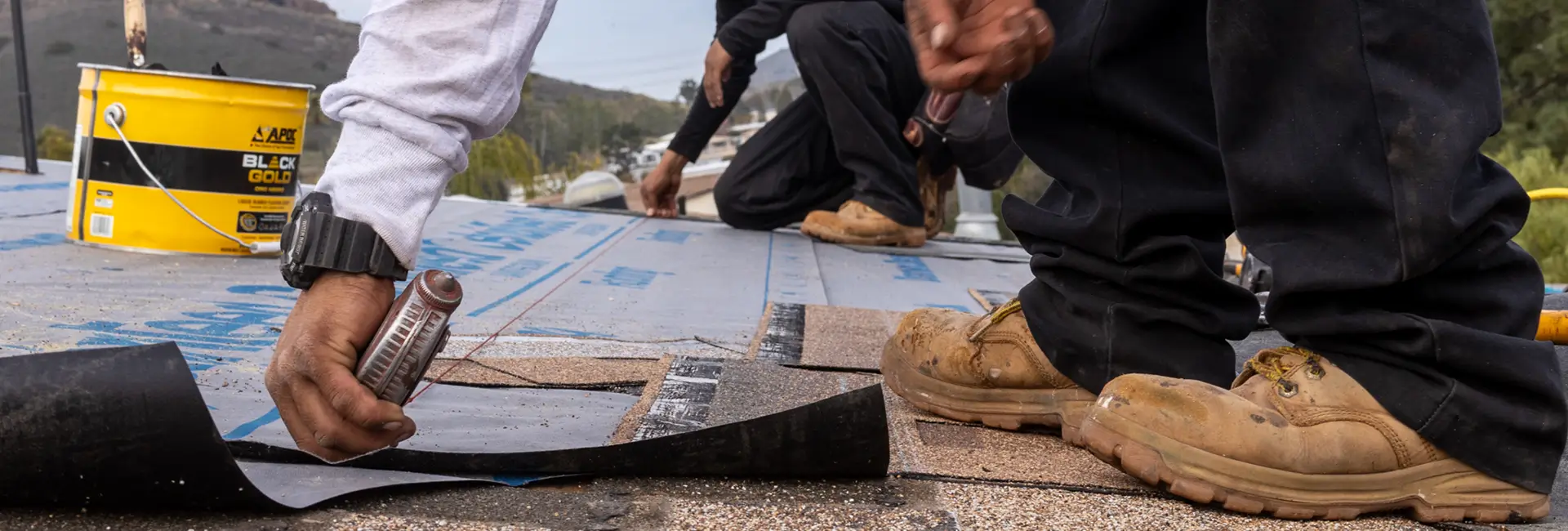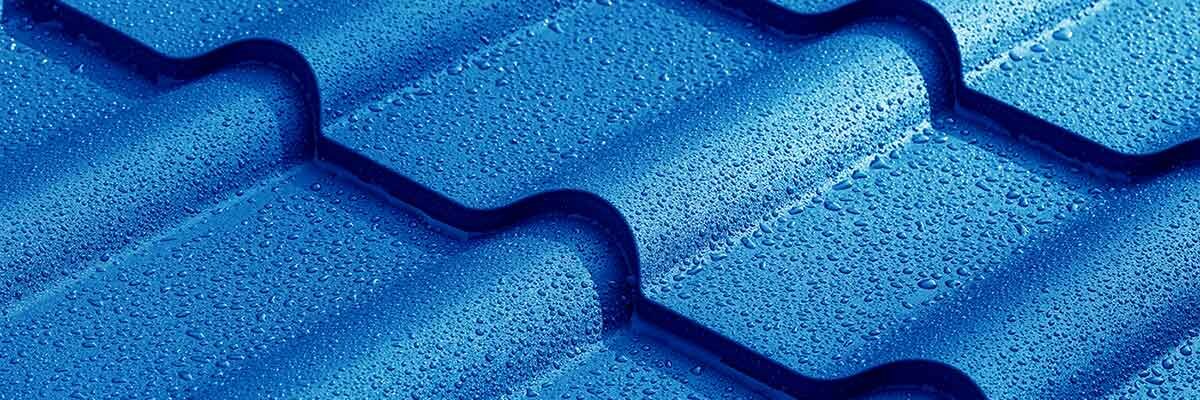What is Roof Underlayment?
Roof underlayment is a layer of material installed directly onto the roof deck, beneath the roofing materials like asphalt shingles. It acts as an added layer of protection against water damage, helping to prevent leaks and repelling water that might seep under your roofing materials.
Types of Roof Underlayment
There are several types of underlayment, each with its own benefits and uses. Here are the most common ones:
- Felt Paper (or Tar Paper):
- Made from asphalt-saturated paper or fiberglass.
- One of the oldest roofing underlayment types.
- Provides a water-resistant barrier and is an affordable option.
- Commonly used on sloped roofs with asphalt shingles.
- Offers decent protection but can tear or deteriorate over time.

- Rubberized Asphalt Underlayment:
- Considered the best type of roofing underlayment for its superior water resistance.
- Made from rubber-like materials that are sticky on one side, which helps it adhere directly to the roof deck.
- Ideal for areas prone to heavy rainfall or where additional protection is needed, such as valleys and eaves.
- Typically the most expensive option but provides excellent durability.

- Synthetic Roof Underlayment:
- A more modern and popular choice among roofing contractors.
- Made from polypropylene or polyethylene, making it lightweight and strong.
- Offers high water resistance, resists tearing, and is generally more durable than felt paper.
- Easier to install and safer to walk on during installation.
- Can be used with a variety of roofing materials and types of roofing systems.

Why Underlayment Matters
The underlayment you choose plays a significant role in your roofing system. Here’s why:
- Protects Your Home: Roof underlayment types like rubberized asphalt underlayment and synthetic options add an extra layer of protection that helps prevent water damage to your home.
- Repels Water: The water-resistant nature of these materials ensures that water doesn’t seep into the roof deck – and ultimately your living spaces – which can lead to costly repairs.
- Meets Building Code: Many building codes require underlayment to be installed as part of the roofing system, ensuring your home is up to code and properly protected.
Choosing the Best Type of Roofing Underlayment
When deciding on the best type of roofing underlayment, consider the following factors:
- Climate: If you live in an area with heavy rainfall, rubberized asphalt underlayment might be the best choice. For drier climates, synthetic roof underlayment or felt paper could suffice. Read more about the climate of Southern California here.
- Roofing Material: The type of roofing material you’re using can also determine the best underlayment. For example, heavier materials like tile or slate often require a thicker, more durable underlayment to provide additional support and protection. Meanwhile, for lighter materials like asphalt shingles, a standard synthetic underlayment may be sufficient to protect against moisture and weather conditions.
- Budget: Rubberized asphalt underlayment is more expensive but offers superior protection, while felt paper is a budget-friendly option that still provides decent protection.
- Installation and Maintenance: Some underlayment types are easier to install and maintain than others. Synthetic options, for instance, are less prone to tearing and can be safer for contractors to work on.
Key Points to Remember
- Underlayment Installed: Ensuring the right underlayment is installed properly can significantly extend the life of your roof and protect against water damage.
- Roofing Contractors: Always hire professional roofing contractors like LocalRoofs to ensure the underlayment and roofing materials are installed correctly.
The Bottom Line
Choosing the right types of roof underlayment is crucial for protecting your home. Whether you go with the traditional felt paper, the durable synthetic roof underlayment, or the highly protective rubberized asphalt underlayment, make sure it fits your climate, roofing material, and budget. Properly installed underlayment helps keep your roof in top shape, providing peace of mind for years to come.
For more information or to schedule a consultation, contact LocalRoofs today! We’ll help you choose the best underlayment to protect your home.


